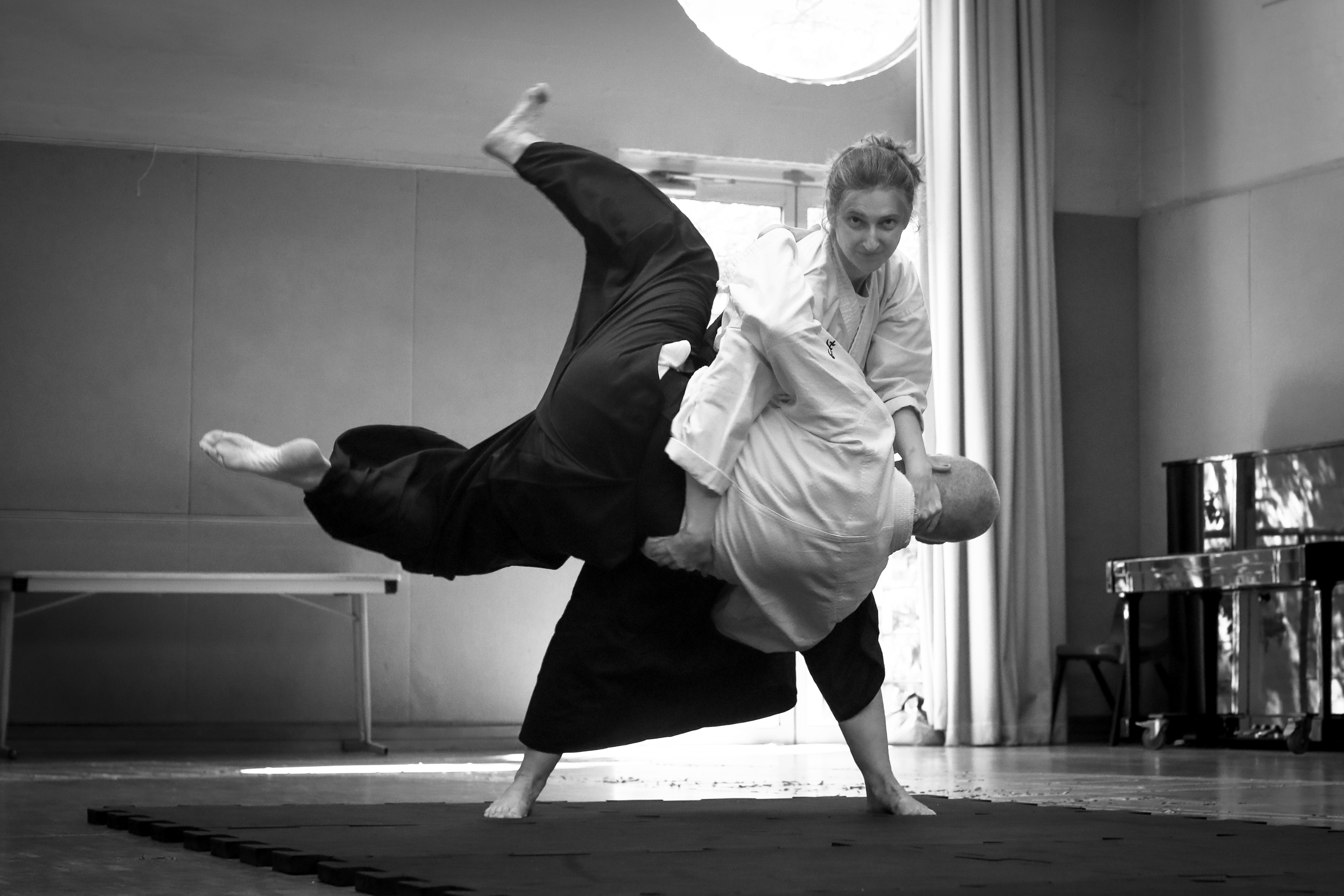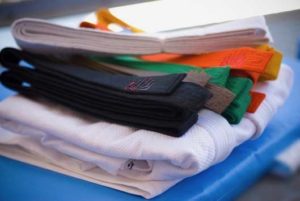There’s a lot of discussion in the media at the moment about equality, so we thought we’d take this opportunity to talk about equality in the dojo, a safe environment where we can practise for the real world.
by Danny James and Andrew Sunter
The concept of the dōjō draws elements from both Shintō and Buddhism. The dojo is a sacred space, a place of calm and respect.
When we enter the dojo, we symbolically purify ourselves as we remove our street clothes and don our ‘spiritual armour’, our dōgi (uniform). We leave behind our outside lives — our profession, status, gender, race and creed — to encounter our selves, striving to resolve physical conflict through the practise of aiki (harmony).
What appears to be an external problem — someone physically restraining us — actually has an internal solution. Over time we learn to respond with calm, confident competence instead of reacting with fight, flight or fright. This requires us first to resolve our internal conflicts: our doubts, fears and preconceptions.
When we arrive we greet sensei, our teacher. She or he is our principal guide on the journey, someone who has been practising the way for some time. When we line up at the start and end of class our sempai sit to our right. Sempai means ‘senior’, not necessarily in age but in terms of time-in on the mat. They help us through the nitty-gritty and we express our gratitude with respect and cooperation. On our left sit our kōhai, our juniors, the people for whom we are responsible. In this way we automatically have an established relationship with every other person in the dojo. This helps to build community and promotes safe and harmonious learning.
At the beginning of class we all bow, saying ‘onegai shimasu’ (please). At the end of class we bow again and say ‘arigatō gozaimashita’ (thanks for that!) to express our gratitude. We exchange this respectful ‘please’ and ‘thank you’ each time we pair up to train during class. This is typical in dojos worldwide.
In our dojo, after bowing to end the class, we form a circle to signify that while we all have different roles and responsibilities, we are all working together and taking care of each other. ‘Otagai ni rei’ means ‘bow to each other’.
Coloured belts are comparatively new to Japanese martial arts, having been introduced as recently as 1935. They help identify relative skill levels in larger dojos and are used more to combine than to divide, because in the dojo we are all family for the few hours a week we spend together.
Just as in a family we have different roles and responsibilities as parents, children and siblings, so too in the dojo we have roles as sensei, sempai and kohai. Over time we hope to experience all of these roles and at times we might occupy all of them simultaneously! Equality is not about everyone having to be the same, equality is about everyone receiving the same respect whatever their position, abilities or attributes and regardless of similarities or differences.
If we can spread these feelings of community and equality into the wider world, wouldn’t that be something?
Quick guide to Japanese pronunciation
- short vowels: a as in ‘part’; i as in ‘peat’; u as in ‘pooh’; e as in ‘pet’; o as in ‘pot’
- long vowels: ai as in ‘pie’; ei as in ‘pay’; ō as in ‘port’
Glossary
dōjō (道場, lit. ‘place of the way’) martial arts training hall; say, ‘daw-jaw’ — ‘doe-joe’ is also fine as it is extensively understood and thoroughly anglicised
dōgi (道着, lit. ‘way clothing’) martial arts uniform; say, ‘dawgy’ — often just called a ‘gi’
aiki (合氣) variously translated as ‘unifying energy’ or ‘harmonious spirit’, the principle of aiki is both a lot simpler and a lot more complex; say, ‘ikey’ as in ‘crikey’
sensei (先生, lit. ‘person born before’) in everyday use it simply means ‘teacher’; say ‘sen-say’ as in ‘sensation’
sempai (先輩) senior (at work, school etc.); say ‘sem-pie’ — just as it is normal to address a teacher directly as ‘sensei’, it is ok to address a senior as ‘sempai’, particularly if you see them as taking a mentoring role in your development; a good sempai is like a kindly older sibling encouraging you to do better and helping you when you get stuck
kōhai (後輩) junior (at work, school etc.); say ‘core-high’ — we never address someone as ‘kōhai’, we typically only use the term when discussing the responsibilities of a sempai
onegai shimasu (お願いします) while this incredibly useful phrase simply means ‘please’, in the dojo it suggests ‘please train with me’ and implies the desire that the training will be both mutually respectful and mutually beneficial; say, ‘on-air-guy-she-muss’ (as quickly as possible)
arigatō gozaimashita (ありがとうございました) this is the past tense of ‘thank you’ and implies ‘thanks for what you’ve done’ at the end of an activity; say ‘ah-re-gar-toe-goes-ah-ee-mush-ta’ (also many times quickly)
otagai ni rei (お互いに礼) bow to each other


1 comment for “Equality in the dojo”